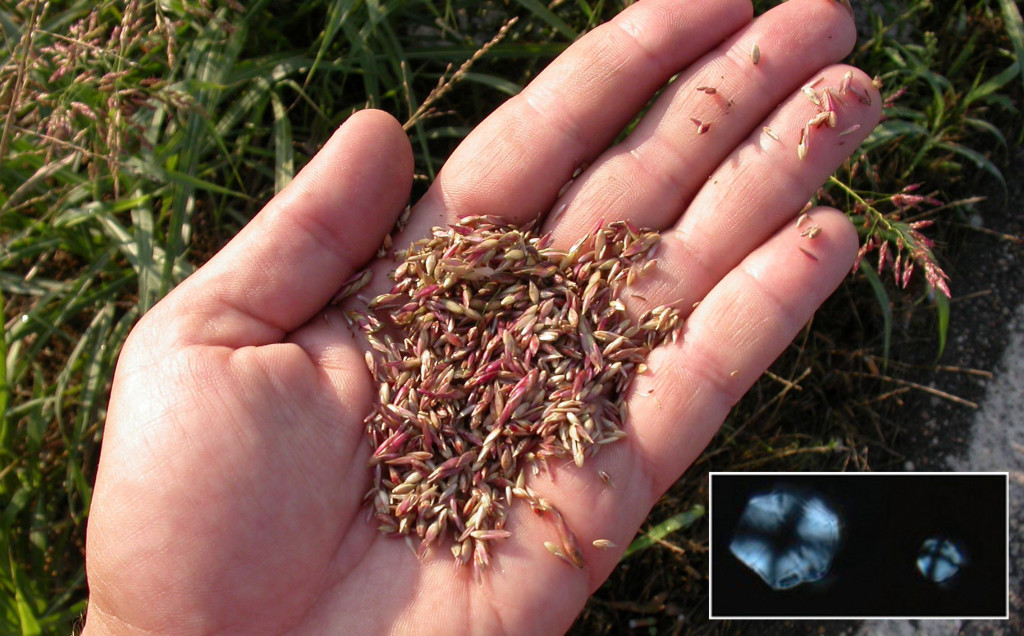
Bare hands experimental gathering of Sorghum halepense. Copyright: Giulio Lucarini. Box image: Starch granules from Farafra grinding tool. Copyright: Anita Radini.
North African archaeological contexts yielded strong evidence of an intensive exploitation of wild plants during the Holocene. Among these, the Haua Fteah cave (Cyrenaica, Libya), and Farafra Oasis (Egyptian Western Desert), have so far produced archaeobotanical assemblages exclusively made up of wild plants, among which wild grasses are prevailing. The same contexts have also yielded a good number of grinding elements. The general assumption of a direct link between grinding tools and plant exploitation has been challenged, adopting an integrated approach of use-wear and residue analysis on stone tools. First, use-wear analysis has been carried out to clarify the tools’ function. Moreover, residue analysis, and in particular starch analysis, only rarely applied in North African contexts, was carried out on samples of tools, in order to determine the types of plants processed. Results confirmed that a variety of wild grasses were gathered and processed, bringing out clearly how North African wild plants represented for thousands of years a primary source of food for the Holocene communities living in the Saharan regions and along the Southern Mediterranean littoral.
Dr. Giulio Lucarini is a Marie Curie Fellow at the McDonald Institute for Archaeological Research, University of Cambridge (UK), and Topoi senior fellow in the research group (A-2) Political Ecology of Non-Sedentary Communities. His research interest focuses on the transition from foraging to food production economies in North Africa. For more information on Giulio Lucarini please visit his personal profile at the University of Cambridge
